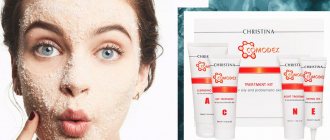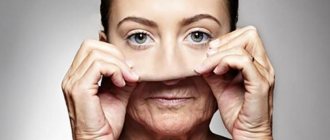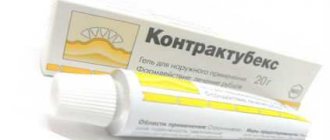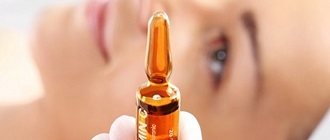Features of fibrillar protein
It is worth noting that in Asian countries - Thailand, Singapore, Malaysia, Indonesia, Japan - there is a collagen boom. Occurs thanks to the support of governments and informing the population. Life expectancy has increased significantly. No wonder, collagen is found in almost all connective tissues, blood vessels, and organs. It has many faces in terms of characteristics. Which one is needed in a particular situation? Today we'll look at the types.
You need to understand that when they talk about types of collagen, they mean human fibrillar proteins. There are nineteen of them in our body. Of these, the main ones are 1st, 2nd, 3rd. They are the ones who influence the health of the individual.
Let's continue the theory - expand our horizons, consider the types.
The collagen molecule contains three polypeptide α chains connected into a network by a triple right-handed superhelix, like a three-strand rope. They have a molecular weight of 100,000-120,000, include approximately one thousand two hundred amino acids, and are shaped like a left-handed helix. The total molecular mass of the molecule is 300,000–360,000. The third chain is not similar to the previous two.
It turns out that 4 classes of α-chains, their combinations, and the length of the superhelix form the types of collagen.
Reviews
If everything that has been said is not completely convincing, then you can read a number of reviews from people who have already tried the effects of this anti-aging supplement.
OLEG:
“When I turned 35, I decided to take my health seriously.
I started actively playing sports and became interested in various sports supplements. Based on the recommendations of friends, I turned my attention to a drug called First Collagen Powder based on collagen hydrolyzate. This is a powder that quickly dissolves in water. As a result of taking it, I soon noticed a positive result: my skin became velvety and smooth.
I didn't feel any side effects. The price of such a jar is only 650 rubles, but what benefits does it provide!”
ANDREY:
“I can’t imagine my existence without sports.
Accordingly, I stick to sports nutrition. I started drinking collagen hydrolyzate in the form of a supplement not so long ago, but I’m extremely happy about it. The powder is easily diluted without lumps. There are different flavors, but I like pineapple better. One jar lasts a long time. Once I injured my shoulder ligaments during training and experienced severe pain.
So, after starting to take the collagen supplement, the shoulder quickly recovered, and I didn’t even have to go to the hospital.”
ELENA:
“I’ve heard a lot of positive things about collagen regarding skin and hair.
My hair used to be problematic due to perms. Nothing helped them regain their healthy appearance. Then I decided to experiment with collagen and bought Collagen Ultra gel with hydrolyzate at the pharmacy. After washing my hair, I applied it over the entire length of my hair. At first I was scared because they became like icicles.
But after drying, a miracle happened - they became soft and stopped fluffing. I recommend everyone to try it!”
Classification by function
The first type is the main one in humans: blood vessels, bones, tendons, fibrous cartilage, a total of ninety percent of the skin. The length of the helix is approximately 300 nm, the diameter is 1.5 nm. Consists of α1, α2 chains.
The second type is presented in the cornea of the eye, intervertebral discs, bone joints, and vitreous body. Arthritis and joint diseases are his topic. Health-improving mixtures, ointments. When choosing type 2, a patient approach, adherence to instructions and doses are very important.
The third type is a unique component of the extracellular matrix, metabolism. It serves as the basis for the connective tissue of human organs. Nourishes hair and nails. More often in dietary supplements it is combined with 1 t., it gives firmness and elasticity to the dermis. Practiced in branded cosmetics. Type III greatly affects the cardiac region and the circulatory system. It is its lack that increases the risk of blood vessel rupture. Detected experimentally by tests on mammals.
Perhaps these explanations are too scientific and confusing. Educational information, introduction. Below we will try to make it clear and applicable in real life.
Biological role
Collagen production occurs from free amino acid residues in the presence of many enzymes, trace elements and vitamins. For the biosynthesis of a chemical compound that is correct in structure, ascorbic acid is most important, the lack of which leads to the formation of low-quality collagen protein. The production of the compound is influenced by the level of female sex hormones and adrenal glands. In the liver, collagen is renewed in 1 month, and in bones and joints – in 1-1.5 years.
The production of the substance decreases with age. After 25 years, a person annually loses 1-2% of collagen, and by the age of 60, no more than 50% of the initial level of collagen proteins remains in the body.
Main functions of collagen:
- Strengthening bones and joints. Protein is a building component for cartilage and bone matrix, it prevents age-related or post-traumatic damage to joints and increases the regeneration of elements of the joint capsule.
- Anti-age effect. Collagen forms the structure of the dermis, ensuring the smoothness and elasticity of the skin. Under the influence of the substance, the number of young fibroblasts increases, the skin looks tightened and moisturized.
- Normalization of metabolism. The substance stimulates the breakdown of glucose, increases energy production, builds muscle mass, which helps burn excess calories.
- Cardiovascular support. Collagen benefits the body because it is part of the structure of the vascular wall and myocardium, increases the elasticity of blood vessels and prevents the development of atherosclerosis.
- Prevention of cellulite. According to research by US dermatologists, a normal level of the polypeptide is necessary to maintain the elasticity of the skin of the abdomen, thighs and buttocks. Collagen compounds prevent microdamage to tissue in these areas and even out the relief.
Neocell, Super Collagen+C, collagen types 1 and 3, 6000 mg, 120 tablets
★★★★☆
from 1,098 RUR
More details
Types of production
The sea view is the most favorable type that suits us. It is perfectly perceived, as it is very similar to a human one. When producing fish protein, innovative, innovative methods are used. It is possible to split the molecule into peptides, i.e. very small components. It is instantly absorbed and goes to where it is deficient. This is associated with a unique result for everyone.
In older people, it often fills the joints, strengthening them, without causing noticeable positive changes in appearance. In young people it varies between other places, restoring connective tissue and skin, nails, hair. Our life systems themselves always choose where it is most needed now. When the necessary places are saturated, they are redirected to others. By continuing to use, you will achieve your desired goal.
The very initial sensation will be increased energy, normalization of brain function, excellent health, concentration, and vigor. You will feel the benefits of fish collagen within a few days. Its producers are most often from Asia, Japan, America (Neoсell).
Animal species are less suitable in molecular composition for humans. You have to expend more energy during assimilation. Accordingly, it is absorbed significantly less than sea water. This type is made most of all by European countries, Russia (Altai) and Europe. It is less expensive, the technology is simpler, and the effectiveness is less.
The plant species is cultivated from wheat proteins. Filled with protein substances beneficial to biomatter and dermis. But we can call it collagen conditionally. Complex production methods make it expensive. Vitamin and nutritional value is good, but poorly absorbed. Hypoallergenic. They began to release them due to cases of disease in European cattle, taking into account the wishes of vegetarians. This substance is, by definition, of animal origin.
Use of fish collagen and HA from other sources
In general, HA has a wide range of applications due to its properties, such as: low viscosity in aqueous solutions, neutral odor, colorlessness, transparency, emulsification and stabilization, foaming, film formation, wettability, solubility, dispersibility, powder compressibility, low allergenic carrier substance , as well as antioxidant and antimicrobial activity. For cosmetic applications, research shows that HA has good biological functions such as increasing cell proliferation, water-holding capacity, moisture absorption, retention and skin rejuvenation. HA is widely used as a functional ingredient in the food industry due to its properties for increasing water retention in meat products, sensory development, and improving the chemical and physical properties of beverages and dairy products.
In the biomedical industry, the use of HA mixed with cellulose or chitosan to prepare scaffolds has contributed to the stimulation of collagen synthesis, treatment of bone and joint diseases, wound healing, excellent biocompatibility and antimicrobial properties.
Sources:
- The Collagen Suprafamily: From Biosynthesis to Advanced Biomaterial Development. Sorushanova A, Delgado LM, Wu Z, Shologu N, Kshirsagar A, Raghunath R, Mullen AM, Bayon Y, Pandit A, Raghunath M, Zeugolis DI Adv Mater. 2020 Jan; 31(1):e1801651.
- Molecular assembly and mechanical properties of the extracellular matrix: A fibrous protein perspective. Muiznieks LD, Keeley FW. Biochim Biophys Acta. July 2013; 1832(7):866-75.
- Sequential extraction of gel-forming proteins, collagen and collagen hydrolysate from gutted silver carp (Hypophthalmichthys molitrix), a biorefinery approach. Abdollahi M, Rezaei M, Jafarpour A, Undeland I. Food Chem. 2020 Mar 1; 242():568-578.
- Effect of pretreatment on enzymatic hydrolysis of bovine collagen and formation of ACE-inhibitory peptides. Zhang Y, Olsen K, Grossi A, Otte J. Food Chem. 2013 Dec 1; 141(3):2343-54.
- Antimicrobial and radical scavenging properties of bovine collagen hydrolysates produced by Penicillium aurantiogriseum URM 4622 collagenase. Lima CA, Campos JF, Filho JL, Converti A, da Cunha MG, Porto AL. J Food Sci Technol. 2020 Jul; 52(7):4459-66.
- O'Sullivan SM, Lafarga T., Hayes M., O'Brien NM Bioactivity of bovine lung hydrolysates prepared using papain, pepsin, and Alcalase. J. Food Biochem. 2017;41:e12406.
- Fu Y., Young JF, Løkke MM, Lametsch R., Aluko RE, Therkildsen M. Revalorization of bovine collagen as a potential precursor of angiotensin I-converting enzyme (ACE) inhibitory peptides based on in silico and in vitro protein digestions. J. Function. Foods. 2016;24:196–206.
- Choi D., Min S.G., Jo Y.J. Functionality of porcine skin hydrolysates produced by hydrothermal processing for liposomal delivery system. J. Food Biochem. 2018;42:e12464.
- O'Keeffe MB, Norris R., Alashi MA, Aluko RE, FitzGerald RJ Peptide identification in a porcine gelatin prolyl endoproteinase hydrolysate with angiotensin converting enzyme (ACE) inhibitory and hypotensive activity. J. Function. Foods. 2017;34:77–88.
- Oral Ingestion of Collagen Hydrolysate Leads to the Transportation of Highly Concentrated Gly-Pro-Hyp and Its Hydrolyzed Form of Pro-Hyp into the Bloodstream and Skin. Yazaki M, Ito Y, Yamada M, Goulas S, Teramoto S, Nakaya MA, Ohno S, Yamaguchi K. J Agric Food Chem. 2020 Mar 22; 65(11):2315-2322.
- Silvipriya K., Kumar KK, Bhat A., Kumar BD, John A., Lakshmanan P. Collagen: Animal sources and biomedical applications. J. Appl. Pharm. Sci. 2015;5:123–127.
- Collagen from Marine Biological Sources and Medical Applications. Felician FF, Xia C, Qi W, Xu H. Chem Biodivers. May 2018; 15(5):e1700557
- Isolation and characterization of fish scale collagen of higher thermal stability. Pati F, Adhikari B, Dhara S. Bioresour Technol. May 2010; 101(10):3737-42
- Decreased collagen production in chronologically aged skin: roles of age-dependent alteration in fibroblast function and defective mechanical stimulation. Varani J, Dame MK, Rittie L, Fligiel SE, Kang S, Fisher GJ, Voorhees JJ. Am J Pathol. 2006 Jun; 168(6):1861-8.
- Skin aging and its treatment. Baumann L. J Pathol. 2007 Jan; 211(2):241-51.
- Wang L., Jiang Y., Wang X., Zhou J., Cui H., Xu W., He Y., Ma H., Gao R. Effect of oral administration of collagen hydrolysates from Nile tilapia on the chronologically aged skin . J. Function. Foods. 2018;44:112–117.
- Marine Fish Proteins and Peptides for Cosmeceuticals: A Review. Venkatesan J, Anil S, Kim SK, Shim MS. Mar Drugs. 2020 May 18; 15(5):
- Daily oral supplementation with collagen peptides combined with vitamins and other bioactive compounds improves skin elasticity and has a beneficial effect on joint and general wellbeing. Czajka A, Kania EM, Genovese L, Corbo A, Merone G, Luci C, Sibilla S. Nutr Res. 2020 Sep; 57():97-108.
Which one is in the products
It's great when it comes from different sources. It is advisable to receive a complex of different categories.
Let's see what types the food contains.
Beef gives I, III.
Seafood (preferably cod) - I.
Chicken-II. Tendon and ligament support.
Gelatin is collagen that has been heated. Condenses after cooling. Added to aspic, jellied meat, puddings, jellies, thickens soups, sauces.
Bone broth - bones, tendons, ligaments, animal skins are boiled for a long time, sometimes for several days. The result is the second type.
Eggs are an excellent source.
Spirulina is a natural supplier of amino acids such as glycine, which is a key component of collagen. It is added to green desserts, smoothies, and juices.
Amino acid composition of collagen (using the example of type I collagen peptide)
The amino acid composition of type I collagen peptide includes about 1/4 glycine. And also, a total of 26% proline and hydroxyproline.
| Amino acid | Abbreviations | Quantity in % |
| glycine | Gly | 23,3% |
| proline | Pro | 13,7% |
| hydroxyproline | Hypro | 12,3% |
| Glutamic acid | Glu | 10,0% |
| alanine | Ala | 8,4% |
| Arginine | Arg | 7,7% |
| Aspartic acid | Asp | 4,5% |
| serine | Ser | 3,4% |
| lysine | Lys | 3,3% |
| leucine | lei | 2,6% |
| valine | Val | 2,2% |
| Threonine | Thr | 1,9% |
| Phenylalanine | Phe | 1,6% |
| Hydroxylysine | Hylys | 1,5% |
| isoleucine | Ile | 1,2% |
| Histidine | his | 0,9% |
| methionine | Met | 0,9% |
| Tyrosine | Tyr | 0,6% |
| cysteine | Cys | 0,0% |
| Tryptophan | Trp | 0,0% |
An important feature of collagen is the presence of hydroxyamino acid residues in the polymer helix.
There are currently about 27 types of collagen. They have different amino acid sequences in their structure. However, the most common types of collagen that are present in animals are types I, II, III and IV. They make up more than 90% of the total collagen content.
How to use
Short instructions for taking different types.
Daily norm
The recommended dose for prophylaxis is 1st 5000 mg. Improves hair condition and rejuvenates appearance.
The therapeutic dose is increased by 10,000 mg, actually doubling - injuries, fractures. Use 2-3 times a day. Only 5000 mg will be absorbed at once.
Joint problem - forty mg of 2nd t. Great to combine with other supplements.
How much to drink by time
The best option is considered to be a 2-3 month program. After 3, repeat. Everything is individual, age and goals are taken into account. Traditionally, manufacturers include instructions on the duration of use for each dietary supplement. The body needs collagen constantly; some people drink it regularly.
How to drink
1) We drink when our stomach is empty, half an hour before meals. Not earlier than four hours after the next meal.
2) Dietary supplements contain vitamin C, without which collagen is not absorbed. If not, you need to make up for it.
3) When using 1+3 and 2nd t together, about an hour should pass.
Types by release form
All types are useful and bring help regardless of physical condition. The main difference is price, speed of functional impact, and digestibility.
Indications for taking collagen
Every human body needs “building material”. But until the age of 20-25, collagen is regularly synthesized by fibroblasts in our body from proteins obtained from food. Later, the rate of its production gradually decreases. Therefore, we can say with confidence that people aged 25+ will not benefit from taking it.
But there are also special categories for which collagen is urgently needed:
- People suffering from diseases of the joints and bones - arthrosis, osteoarthritis, meniscus injury, osteochondrosis and other diseases.
For them, the daily portion of collagen should be at least 10 g;
- Athletes.
In particular, bodybuilders and weightlifters have the greatest need for collagen. After all, all the body’s resources during intense strength training are directed toward building new muscle fibers, and the shell of each of them is represented by this particular protein. The daily norm of collagen for bodybuilders is 5-10 g;
- Women during menopause.
At this time, the hormonal activity of the body decreases, metabolism slows down and intensive protein destruction occurs. This causes a sharp decrease in skin elasticity, hair loss, joint pain and hot flashes. Collagen will help support metabolism and minimize the impact of hormonal status on appearance.
It is also recommended to take fibrillar protein for people who want to slow down the aging process, improve their well-being and increase their own activity. For them, doctors have prescribed a dosage of 5 g of collagen per day.
Differences in release form
Liquid
Drinking - obtained from leather, fish scales. It can be pure or diluted with various additional ingredients: microelements, vitamins. Concentrated is much more effective. Instantly absorbed. The result is noticeable at the beginning of the program. It is sold in small bottles (one quantity is filled, enhanced with additives) or packaging with a dispenser. Neutral substance, odorless. This type of collagen is used for external integument and mobile connections of bones. Positively affects the functioning of all processes.
Powder
Powder is an interesting option, but is slightly less easily absorbed by the digestive tract. It can be marine or animal. It is diluted with water and any drinks for successful acceptance by the body. Do not accept dry. Pour into porridge, soups, yogurt. The course with this collagen is longer. Plus - more economical cost than drinking. It is made by grinding bones, skins, cartilage of fish and cows. The best of the free-swimming ocean inhabitants, cattle grazing in the meadows.
Tablets, capsules
Collagen is pressed, packed in bulk. Be sure to drink plenty of water while completing the course. Decent efficiency, although weaker than previous forms. You can buy it inexpensively.
]
Hydrolyzed
Official manufacturers write on the label – hydrolyzed collagen. An excellent option. In practice, these are peptides released by hydrolysis (cleavage). Increased digestibility and solubility are formed, without loss of vital substances. Experts describe it this way: “protein in its purest form”
What happens to the body when there is a lack of collagen?
- Joint problems begin to appear
- You feel constantly weak and get tired faster
- Wrinkles may appear faster
- Overall appearance gets worse
- Skin looks gray and lifeless
In addition to taking hydrolyzed marine collagen, you should monitor your rhythm of life. If you have a collagen deficiency in your body, take care of your health.
Spend less time in direct sunlight and always use sunscreen on exposed areas of the body. Give up sweets, smoking and alcohol.
Summary
Let's summarize all of the above. This will help answer the age-old question: “which collagen is better.”
There are three actually used types, depending on location and effect on the body. The first is the main one - 90% of all in the body. The 3rd goes to it additional, but significant. The second is a doctor for ligaments, knees, ankles...
When choosing, we start from the problem. We look at what hurts, and choose which one helps.
According to customer reviews, ocean collagen is more effective. The release is liquid. But not everything is so simple. You have to consider how much it costs. An animal is often cheaper.
Vegetable protein, advertised as collagen, due to its characteristics is of little use for the prevention or treatment of diseases. For the purpose of at least some weak but accessible prevention, you can purposefully consume foods with a high content of it. We wish you good health!
Contraindications
Collagen is a natural protein that is found in our body in large quantities. Therefore, many sincerely believe that there are no contraindications to its use. In fact, this is not so. The fact is that collagen-based preparations are made from animal and fish tissues, plant materials, and they are not so close in composition to human protein. Therefore, sometimes side effects occur that force you to stop taking the drug:
- Food intolerance;
- Pain in the stomach, this is especially common with gastritis and pancreatitis;
- Allergy.
Other contraindications for use include:
- Cholecystitis and pancreatitis.
Diseases of the pancreas and liver cause low enzymatic activity, in which high protein content in food and dietary supplements leads to flatulence and diarrhea;
- Kidney diseases.
With them, protein processing products can also aggravate the situation.
If side effects occur - skin rash, stomach pain and nausea, it is better to stop taking the drug.
Can I take collagen during pregnancy?
There are no direct contraindications for use. After all, collagen is a natural substance that is found in the body in large quantities. But it is important to remember that during pregnancy and lactation the female body experiences serious hormonal changes, which can provoke allergic reactions even to completely harmless products. Therefore, it is better to consult a doctor before use.
Compatibility of collagen and alcohol
A healthy lifestyle and alcohol are not compatible in principle.
And it has a special effect on collagen - it disrupts its spatial shape and breaks the chains of peptides. Therefore, drinking alcohol completely cancels the effect of collagen.










